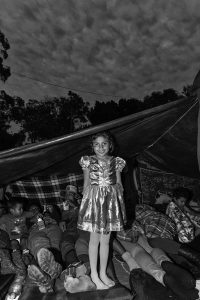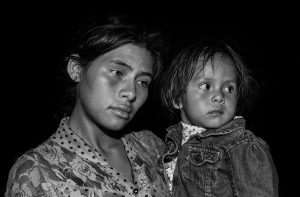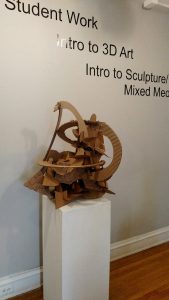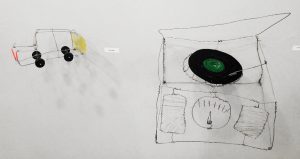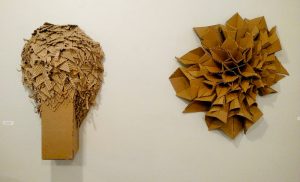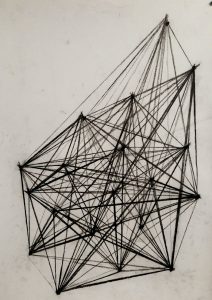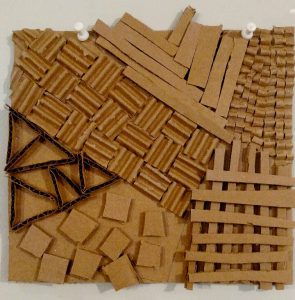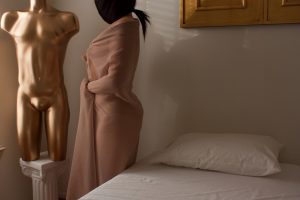Mosaics
September 2020
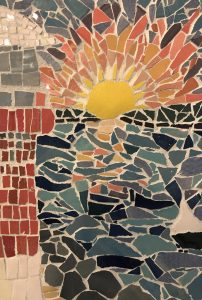
Amanda Herzig ’22
Text by Elisabetta Mannello ‘22, Gallery Exhibition Research Assistant
The pieces featured in this collection come from Professor Jill Allen and Professor Patrick Coughlin’s Mosaics I classes. Mosaics I is a class that studies “tesserae”. Tesserae are the small pieces of ceramic tile or glass used to create mosaics. Many mosaic techniques are explored in the class. In the traditional method, students roll out slabs of clay which are fired, painted with glaze (providing the color) and then fired again. The colored tile slabs are broken down into smaller pieces to fit into the designs. The smaller pieces are then adhered to the wood or cement board backing. Finally, grout is used to fill in the empty spaces between the tile.
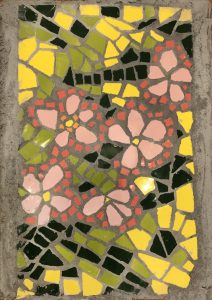 Chelsea Evans ’21
Chelsea Evans ’21
Some pieces featured in this display are from the Fall 2019 Mosaics class. They are the pieces that were inspired by the theme “Women We Respect”, in celebration of the 100th anniversary of women’s right to vote in America. The students chose a woman who has inspired them personally and designed a mosaic after them. They first traced the image of the woman onto a slab of clay and then carved the outlines into sections of color and value, which is a more contemporary approach. They did not break the image up into smaller pieces, which is the traditional method of creating mosaics.
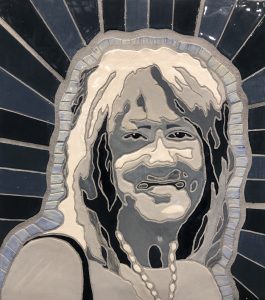 Isabella Africa ’22
Isabella Africa ’22
Professor Jill Allen hopes that her students came away with an understanding of historic mosaic techniques while realizing that they can use their new knowledge to discover unique building techniques, exploring their own artistic voices.
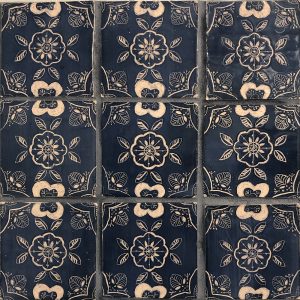 Melissa Rickards ’20
Melissa Rickards ’20
Professor Coughlin’s class created two projects, a repetitive tile piece and a small tile piece. The students start out with an image or drawing and study the colors and tonal values in order to replicate it. Serana Pellegrino’s piece represents herself and someone close to her resting in a hammock, “simply appreciating all the simple things around”. She was inspired by nature, which is where she says she finds herself. She created it from a vision, sketching and coloring it first and then creating the mosaic. Serana used the knowledge she obtained from class on translating color gradients into mosaic to create the piece.
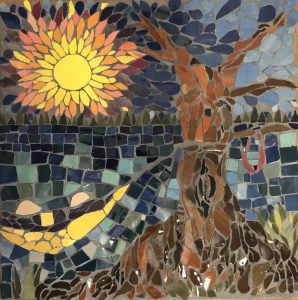 Serana Pellegrino ’20
Serana Pellegrino ’20


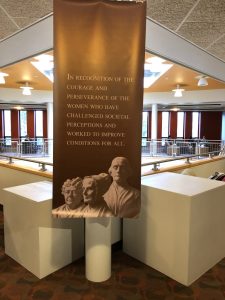
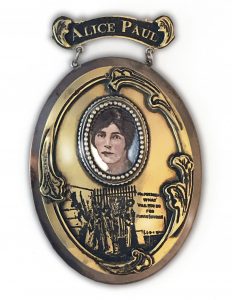
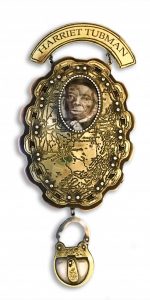
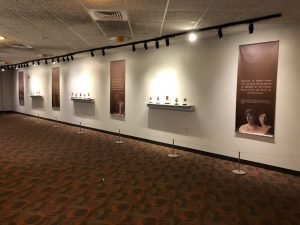

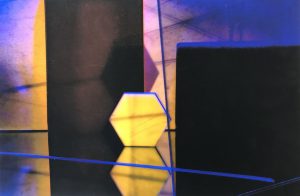
 William Alves
William Alves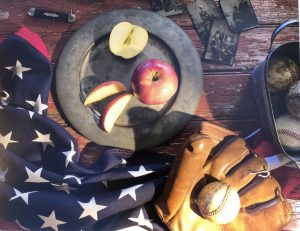 Alexander Gonzales
Alexander Gonzales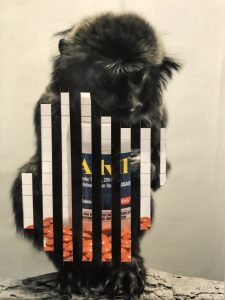 Marina Wilson
Marina Wilson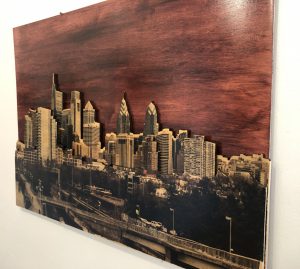 Evan Buchanan
Evan Buchanan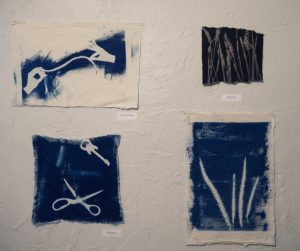 Students, Mara Trapani, Sophia Dell’Arciprete and Harrison Morris created a sampling of cyanotypes and vandyke brown on fabric.
Students, Mara Trapani, Sophia Dell’Arciprete and Harrison Morris created a sampling of cyanotypes and vandyke brown on fabric.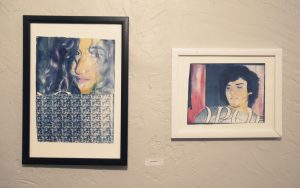
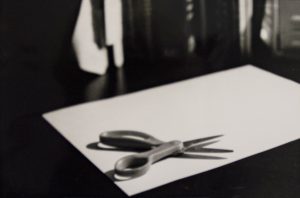 Nico Dennis uses light and shadows to create dramatic effects on everyday objects.
Nico Dennis uses light and shadows to create dramatic effects on everyday objects.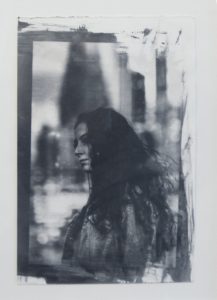 Sarah Gray paints liquid light emulsion onto paper before exposing her image.
Sarah Gray paints liquid light emulsion onto paper before exposing her image.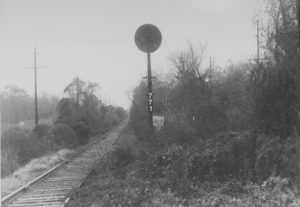 Aiden Saul takes his 35mm Pentax out into nature on an overcast day for this dreamy shot.
Aiden Saul takes his 35mm Pentax out into nature on an overcast day for this dreamy shot.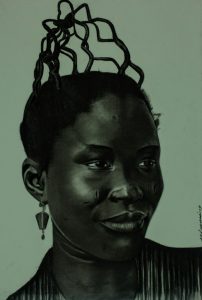
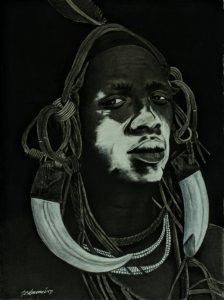
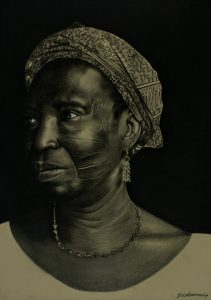
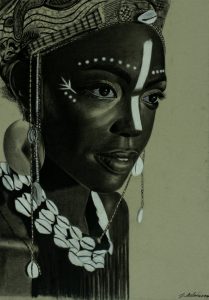
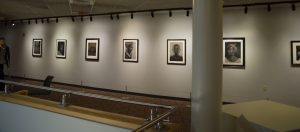
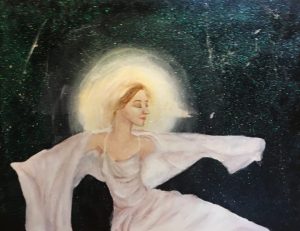
 Quiongdan Hu ’20
Quiongdan Hu ’20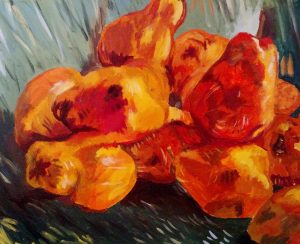 Carley Rose ’22
Carley Rose ’22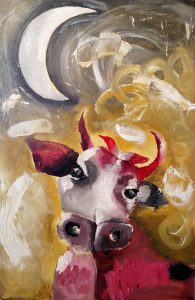 Caroline Stefan ’22
Caroline Stefan ’22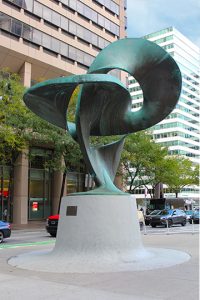
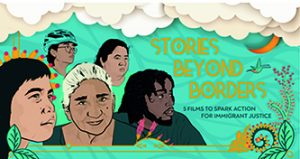 October 17, 5-7pm
October 17, 5-7pm